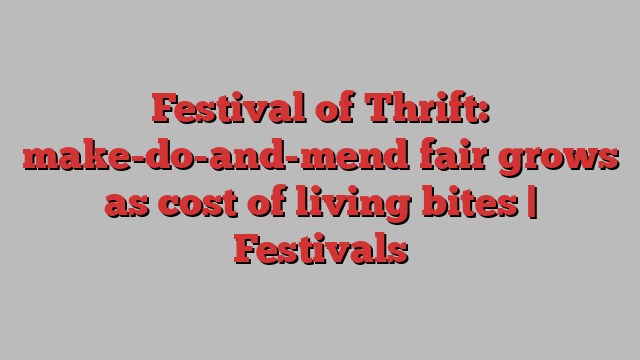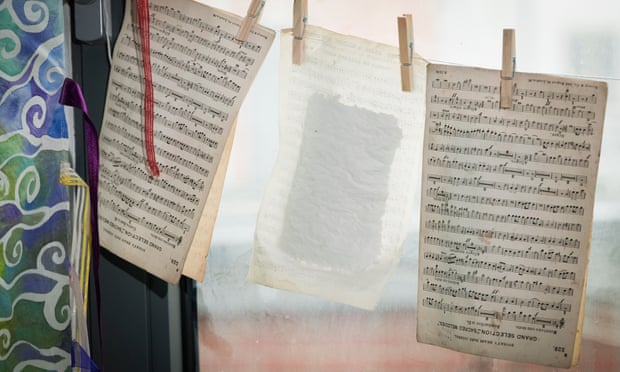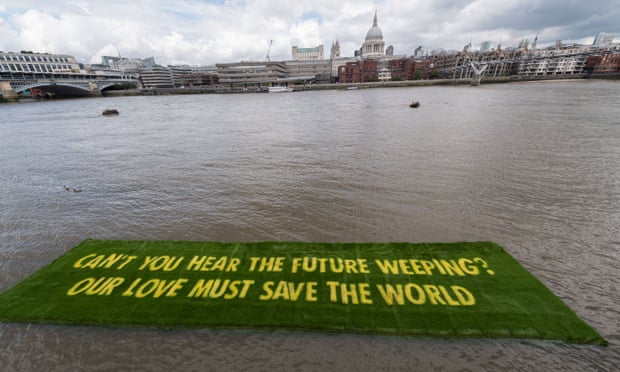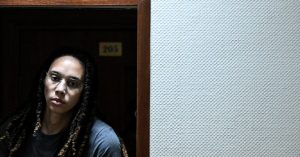
In an office window on Redcar’s rainswept esplanade hangs a washing line of recycled paper, slowly drying after being pulped and having seeds embedded into it. Soon the paper will become business cards and leaflets.
Inside the the office, organisers of a festival taking place on 24-25 September discuss what workshop should go where, from sessions on how to make your own laundry liquid and do-it-yourself aromatherapy, to lessons for children in sawing and hammering.
The Festival of Thrift has been going for 10 years and, with little sign of the cost of living crisis easing, this year it seems more relevant than ever.

It is the UK’s only national celebration of sustainable living and the core message remains the same, says the festival’s creative director, Stella Hall. “We have never lost that starting point which is thrift, make do and mend, keeping things rather than chucking them into landfill, fixing things rather than throwing them away, swapping things rather than putting them in the dump.”
Over two days there will be food, music, art, interactive entertainment and a blizzard of workshops on how to make your own wildflower bombs, beeswax food wraps or clay mindfulness totems.
The festival will take over the village of Kirkleatham, in the borough of Redcar, for two days. If visitors don’t wish to make things, there are free tips on basic budgeting by the Darlington Building Society and lessons in Japanese “boro” clothes-mending techniques.

Hall, one of the festival founders, recalls how tricky it was in the early days to find sponsors. “One company said they would like to get involved but said ‘we’ve talked to our staff and they think it’s a bit too hippyish’. But, of course, everyone came with their families and they had a fantastic time and so the next year the perception had changed.”
The organisers expected perhaps 5,000 visitors in the first year and about 25,000 people came. “We realised we had hit a zeitgeist. There were people wanting to learn old skills and share their knowledge and their stuff.”
Last year, with very little time to organise the event because of the pandemic, there were close to 50,000 visitors.
Art and artists will be at the heart of the festival, says Hall. “Artists are always at the forefront of our thinking because they can help you re-vision the future. In subtle ways, every year artists astound me with their ability to bring difficult concepts into a performance or an installation and really get our ideas across.”

One highlight this year is a collaboration between the novelist and poet Ben Okri and the artist duo Heather Ackroyd and Dan Harvey. They will show a version of a work originally displayed at Tate Modern, in which Okri’s words – “Can’t you hear the future weeping? Our love must save the world” – were imprinted and grown in a large, living banner of grass.
Other events include a popular swap shop, where someone might bring a pair of unused garden shears and come away with a new ice-cream machine.
Long before BBC One’s The Repair Shop, the Festival of Thrift had its Fix It Cafe, which is less about cherished heirlooms and more about broken kettles, laptops or lawnmowers.
Planning for the festival takes place all year round, and Hall is keen to point out: “It’s a communities festival. We listen. We ask what do you want? What do you need? What can you offer? What can you share?”
It has important underlying messages about sustainable development but, Hall hopes, visitors won’t come away feeling they have been bashed over the head or preached to.
The cost of living crisis has sharpened the minds of organisers. “It’s a responsibility to give people what they need, not just what you think will be fun and enjoyable,” says Hall. “Yes it is about fun as well as some very serious messaging.”
How to make your own laundry detergent, by Lou Rea
You will need:
1 cup of bicarbonate of soda
1 cup of soda crystals
5-10 drops organic essential oil (optional)
1-2 cups of soap flakes (optional)
Mix everything together and store in an airtight container. To use: scoop 1/8 – 1/4 of a cup per wash. Note, if you leave the powder out in the open it hardens and you will lose the fragrance.
Bicarb is a natural softener. You can also replace shop-bought liquid with distilled white vinegar. The vinegar smell disperses in the rinse wash. For this add a few drops of organic essential oil but steer clear of synthetic fragrance. Lavender and tea tree is a lovely blend.
Add five drops of essential oil to a litre of distilled vinegar. Shake and store in a sealed glass bottle. Add one cup per wash.
Lou Rea is an aromatherapist and will be leading the love your laundry workshop at the festival.
The Festival of Thrift, 24-25 September, Kirkleatham, Redcar.

